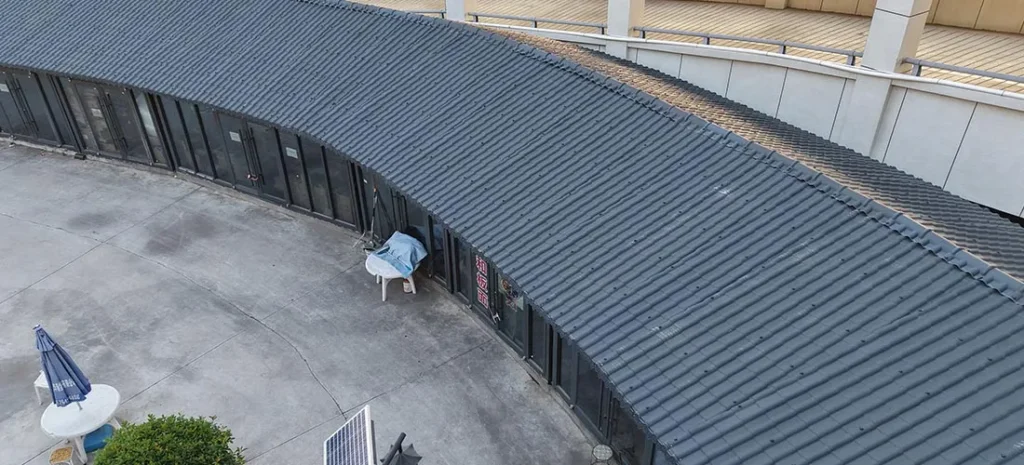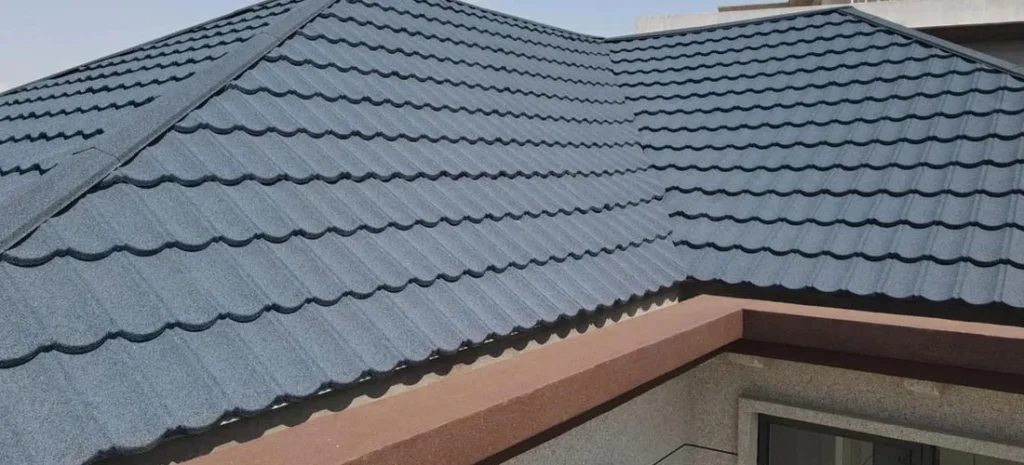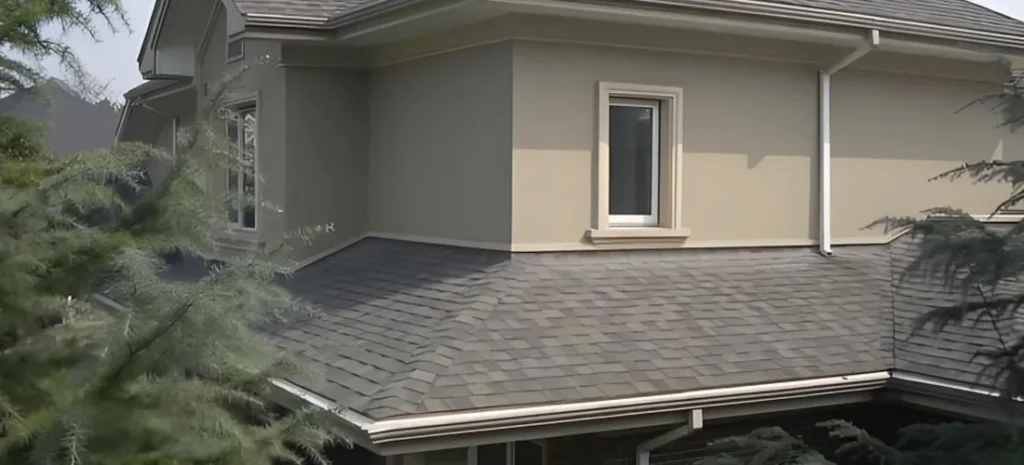For buildings in tropical regions, roofs endure the harshest conditions: intense UV radiation, frequent heavy rainfall, extreme humidity, and coastal salt spray corrosion. These factors combine to accelerate the aging and failure of traditional materials. In this battle against nature, high-performance polymer roofing systems have emerged as the superior solution. Among them, PVC roofing sheets and ASA synthetic resin sheets represent the pinnacle of this innovation. Essentially, ASA sheets can be viewed as an upgraded version of PVC sheets, together forming the next-generation solution that is redefining roofing standards for tropical construction with their exceptional performance.

1. Four Core Challenges of Tropical Climates for Roofing
- UV Radiation: Constant intense sunlight causes material degradation, fading, chalking, and loss of protective properties.
- Heavy Rainfall and Water Pooling: Torrential downpours test a roof’s immediate drainage capacity and long-term waterproofing integrity. Leaks can lead to structural damage.
- High Humidity and Biological Growth: The hot and humid environment is a breeding ground for mold, algae, and moss, which damage aesthetics and corrode materials.
- Salt Spray Corrosion: Salt particles in coastal air rapidly corrode metal components, posing a significant threat to roofing durability.
2. The Solution: Exceptional Performance of PVC and ASA Synthetic Resin Sheets
ASA (Acrylonitrile Styrene Acrylate) synthetic resin sheets can be understood as the evolutionary upgrade to PVC roofing sheets. Together, they represent the optimal solution for tropical challenges, sharing many core advantages while evolving in key performance areas.
Their Shared Advantages Include:
- Exceptional Weather Resistance and UV Stability: With added high-efficiency UV stabilizers, they reflect solar radiation, effectively resist UV damage, maintain long-term color and physical stability, and offer a service life of 25-30 years.
- 100% Waterproof and Superior Drainage: Utilizing large widths and overlapping (or welded) seams, they form a highly effective water barrier. Their smooth surface ensures rapid rainwater runoff, reducing the risk of water pooling.
- Excellent Chemical Resistance and Anti-Mold Properties: Highly resistant to acids, alkalis, and salts, making them ideal coastal roofing materials. Their dense, smooth surface effectively inhibits the growth of mold and algae.
- Lightweight yet Strong and Easy Installation: Extremely lightweight (approx. 5-6 kg/m²), significantly reducing the load on the roof structure. They are easy to cut and install, adapt to complex shapes, and shorten construction timelines.
- Energy Efficient and Eco-Friendly: Light-colored surfaces have a high Solar Reflectance Index (SRI), significantly reducing air conditioning costs and mitigating the urban heat island effect. The materials are also recyclable, aligning with green building principles.
ASA as an Upgrade:
The ASA resin layer provides enhanced weatherproofing. ASA is an inherently extremely weatherable engineering plastic. As a surface layer, its resistance to UV radiation, fading, and physical degradation is more fundamental than traditional modified PVC systems, offering a dual layer of protection.
3. Performance Comparison of Different Roofing Materials in Tropical Regions
| Characteristic | PVC/ASA Synthetic Resin Sheets | Metal Tiles (Galvalume/Al-Mg-Mn) | Stone-Coated Steel Tiles | Asphalt Shingles |
|---|---|---|---|---|
| UV Resistance/Fading | Excellent (ASA/PVC + UV layer) | Good (Fully depends on coating quality) | Excellent (Protected by stone granules) | Poor (Prone to fading, chalking) |
| Waterproofing | Excellent (Superior integrity) | Good (Relies on seams & sealants) | Good (Relies on seams & sealants) | Medium (Relies on overlapping layers) |
| Salt Spray Corrosion Resistance | Excellent (Inorganic material) | Good to Excellent (Depends on coating) | Excellent (Galvalume base + coating) | Poor (Metal components rust) |
| Mold/Algae Resistance | Excellent (Smooth, inorganic surface) | Good (Smooth coating) | Medium (Rough surface can trap dirt) | Poor (Organic material, prone to growth) |
| Weight | Very Light | Light | Light | Medium |
| Wind Uplift Resistance | Excellent (Secure fastening, high resistance) | Good (Depends on fixing system) | Good (Depends on fixing system) | Poor (Easily lifted by strong winds) |
| Thermal Insulation | Medium (Requires separate insulation) | Poor (Requires separate insulation) | Poor (Requires separate insulation) | Medium |
| Maintenance Cost | Low | Medium (Coating repair/replacement) | Medium | High (Requires periodic replacement) |
| Aesthetics | Modern, Minimalist | Modern, Industrial | Imitates traditional tiles, highly aesthetic | Basic |

Comparative Analysis:
- Stone-Coated Steel Tiles: These are a premium variant of metal tiles, featuring a galvanized steel core coated with colored basalt stone granules. Their key advantage is aesthetics, perfectly mimicking clay tiles, wood shakes, etc., while being lighter and more impact-resistant than natural materials. Their performance relies on the metal substrate and coating; they offer poor thermal and acoustic insulation and can be noisy during heavy rain. While more weather-resistant than standard metal tiles, the long-term adhesion of the granules and substrate corrosion are potential concerns.
- Metal Tiles: Offer good performance, but their suitability in the tropics heavily depends on the quality of the surface coating (e.g., PVDF). Damage to the coating invites corrosion. Poor insulation and rain noise are inherent drawbacks.
- Asphalt Shingles: Lowest initial cost, but have the shortest lifespan in tropical conditions. They are prone to fading, curling, wind damage, and mold growth, making them unsuitable for high-quality tropical construction.

4. How to Choose the Best Roof for Your Tropical Project
- Prioritize Ultimate Weather Resistance, Lightweight, and Waterproof Reliability: Choose PVC or ASA synthetic resin sheets. They are the “technical” answer to strong UV, rain, and salt spray, ideal for modern homes, commercial buildings, and industrial facilities.
- Prioritize Traditional Aesthetics Combined with Light Weight: Choose Stone-Coated Steel Tiles. Suitable for projects desiring Old World, Mediterranean, or traditional tile aesthetics without the weight of concrete tiles.
- Budget-Conscious for Temporary or Secondary Structures: Asphalt shingles might be considered, but their shorter lifespan and higher maintenance costs must be accepted.
Conclusion
In tropical regions, choosing a roofing material goes far beyond aesthetics; it’s a strategic decision impacting building longevity, safety, and energy efficiency. PVC roofing sheets and their evolved counterpart, ASA synthetic resin sheets, with their inherent design to actively combat harsh climates, offer the best comprehensive performance solution. Together with stone-coated steel tiles (for aesthetic needs) and traditional metal tiles, they form the mainstream choices for modern tropical construction. Understanding their core differences will empower you, the architect, developer, or homeowner, to make the wisest and most economical long-term investment.


